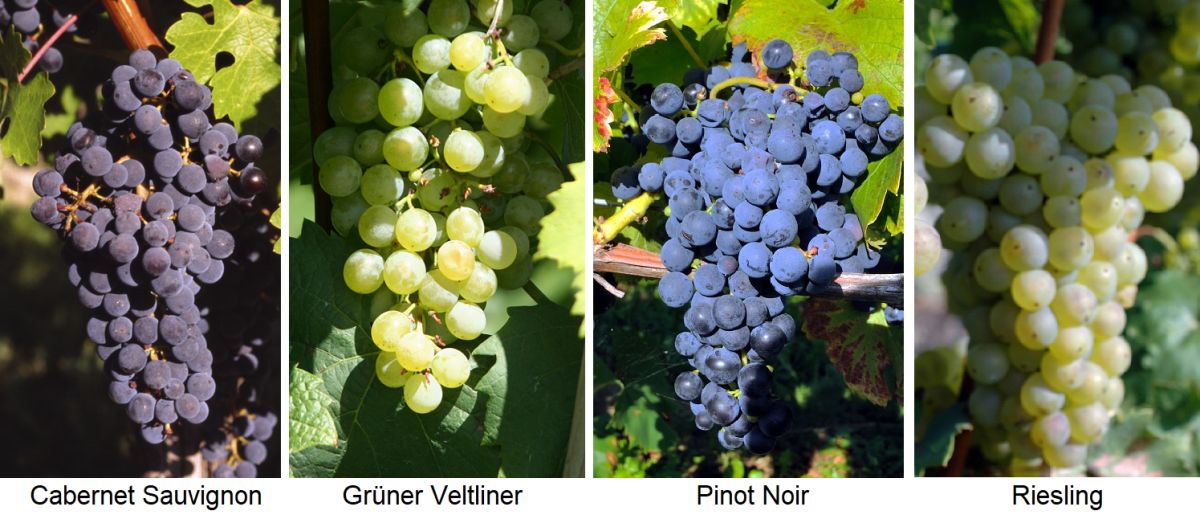According to the EU Regulation, Member States must classify the wine grape varieties that may be planted or grafted in their territory for the purpose of wine production. These must belong to the European species Vitis vinifera or come from a cross of this species with other species of the genus Vitis (e.g. the Asian Vitis amurensis or the American Vitis labrusca). However, six grape varieties are banned even though they fulfil these conditions. These are Clinton, Herbemont, Isabella, Jacquez, Noah and Othello. Why these six in particular has historical reasons that no one knows or can explain today, even from the official side (one of the mysteries of EU laws). They are American hybrids, but there are many others that are allowed for cultivation. If varieties are deleted from the classification, the areas concerned must be grubbed up within 15 years of their deletion (with the exception of areas for the vintner's own use).

Classification
However, this classification only applies to cultivation and does not automatically mean that these varieties may also be used for all wine quality classes. If the above conditions are met, the decision-making authority lies with the responsible bodies of the wine-growing countries. They decide on their own responsibility which varieties may be used for which quality classes with, if necessary, restrictive conditions. From the varieties classified according to the above-mentioned criteria, those must therefore be defined that are permitted for the production of Landwein( PGI) and Qualitätswein(PD O). This concerns above all the PIWI varieties (fungus-resistant varieties), which are in particular demand in organic viticulture.
Special regulations
In Austria, the term quality wine grape varieties has become established. However, these do not only apply to quality wine, but can of course also be used to produce Landwein and Wein. All other classified grape varieties may only be used for the stages "wine" (without varieties/vintage, formerly table wine) or "varietal wine" (with varieties/vintage). For "varietal wine", grape varieties or grape variety names which have a protected geographical indication or a protected designation of origin as part of their name and could therefore be misleading for the consumer may not be used (for example, Blauer Burgunder could indicate the origin Burgundy). It is up to the member states to define these grape varieties or grape variety names. In Austria, these are Weißer, Grauer and Blauer Burgunder, as well as Blaufränkisch and Rheinriesling. Instead, the synonyms Pinot Blanc, Pinot Gris, Pinot Noir and Riesling are permitted; there is none for Blaufränkisch.
recommended or authorised
There are recommended, authorised and temporarily authorised grape varieties. Recommended should be those that can produce excellent qualities in the respective area. All others are approved. Temporarily admitted are varieties that still have some economic importance but are to be phased out. Due to a transitional provision, vineyards with temporarily admitted varieties must be grubbed up no later than 25 years after classification. In Austria, for example, these include Concord (Ripatella), Delaware and Elvira, which are used for the local Burgenland wine speciality Uhudler. For new grape varieties, a plant variety protection must be applied for, only then can an inclusion in the country-specific variety lists take place. The quality wine grape varieties defined in Germany and Austria are listed there. A complete list of relevant keywords on the subject of grape variety is included under Weinrebe.
CS: From BerndtF, CC BY-SA 3.0, Link
GV: From Rosenzweig - Own work, CC BY-SA 3.0, Link
PN: From Wladyslaw - Own work, CC BY-SA 3.0, Link
RIE: By Bauer Karl - Own work, CC BY 2.0 at, Link
Voices of our members

In the past, you needed a wealth of encyclopaedias and specialist literature to keep up to date in your vinophile professional life. Today, Wine lexicon from wein.plus is one of my best helpers and can rightly be called the "bible of wine knowledge".
Prof. Dr. Walter Kutscher
Lehrgangsleiter Sommelierausbildung WIFI-Wien